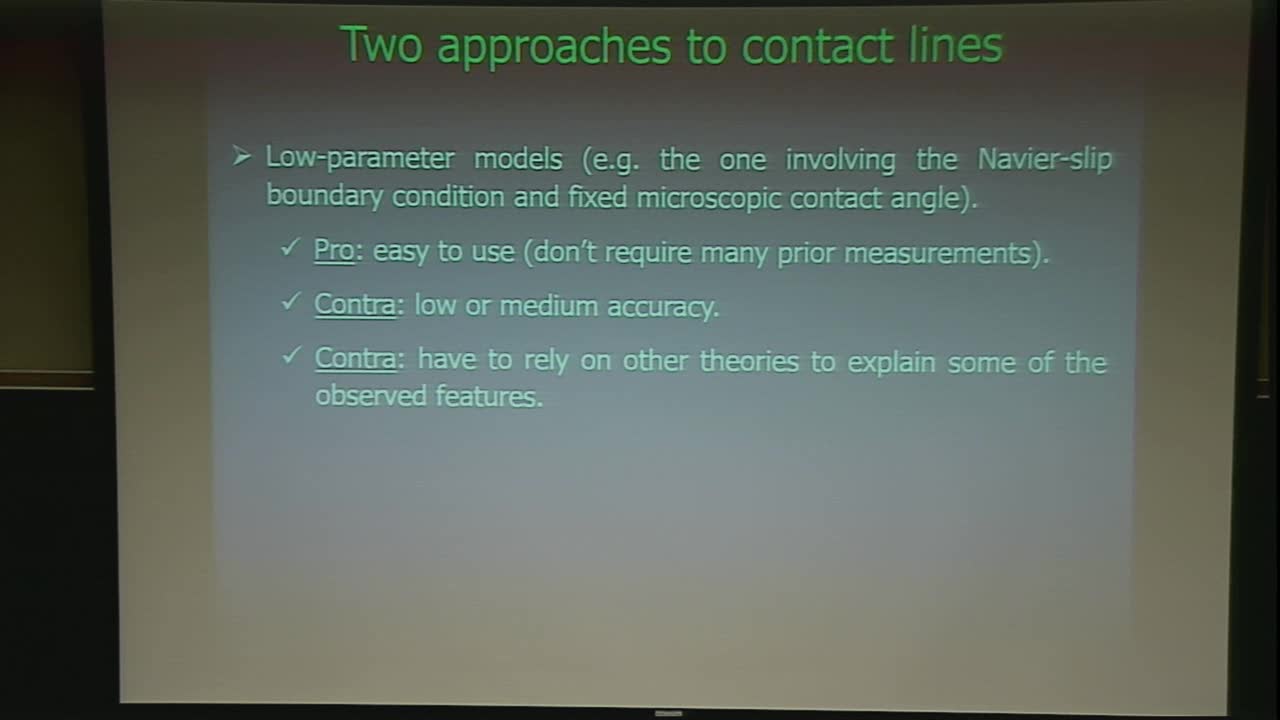Three ways of getting contact lines to move without breaking the no-slip boundary condition
Presenter
March 27, 2018
Keywords:
- contact line, contact angle, no-slip boundary condition
Abstract
Recent comparisons of theoretical models of contact lines with experimental results (Podgorski et al. 2001, Winkels et al. 2011, Puthenveettil et al. 2013, Benilov & Benilov 2015) show that, in some cases, the most popular model – based on the Navier-slip condition and a prescribed contact angle – works only if the slip length is unreasonably small (subatomic). So far, the discrepancy has been observed for glycerine, glycerine/water mixture, ethylene glycol, and mercury, making one wonder whether the list of exceptions is long enough to cast a doubt on the actual rule.
In this talk, three different ways are outlined of reconciling moving contact lines with the no-slip boundary condition.
Firstly, it is shown that, if the contact angle is 180 degrees, the usual contact-line singularity does not arise in a free-boundary, no-slip Couette flow [as predicted by the local analysis of Benney & Timson (1980)]. Secondly, it is argued that a contact line can advance without slipping provided the liquid/gas interface is in a state of perpetual overturning (similar to a water wave running up a beach). Thirdly, a kinetic model is suggested, based on the so called Enskog–Vlasov equation describing contact lines on a molecular level – i.e., without imposing any macroscopic boundary conditions including the no-slip and Navier-slip ones.
